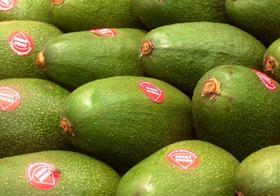
Japan imported a total 164,763 tonnes of fresh fruit in July 2020, up marginally (0.8 per cent) from the 163,508 tonnes imported during the same period in 2019.
This is according to data reviewed by Tokyo Seika president Jack Moriya. It continues the trend of gradual growth in imported fruit, as seen in figures released in August, which indicate a year on year growth of 3 per cent in fresh fruit imports for the first six months of 2020.
A total 97,306 tonnes of bananas were imported during the time period, up from 94,237 tonnes year on year. Interestingly, said Moriya, the origin of supply showed signs of movement.
“We haven’t seen such a low level of Philippine origin in July for some time. It’s possible Philippine confronted serious issues in their production, or they simply shipped bigger volumes to the other countries like China, but we suppose the former reason,” he said.
The Philippines accounted for 73.3 per cent of Japan’s banana imports in July 2020, compared to 81 per cent in 2019. The drop in Philippine supply was met by Ecuador, with 13 per cent (+2.1 per cent), Mexico with 8.9 per cent (+3.9 per cent), with the remaining rounded out by Guatemala at 2.2 per cent (+1.1 per cent).
Meanwhile, the continued emergence of Peru as an avocado supplier to Japan continues to gain momentum. Peru supplied 34.2 per cent of all avocado imports to Japan during July 2020. This is up from the July 2018 totals of 23.1 per cent.
Much of Peru’s market share has come at the expense of Mexico, which has shown to be trending down over the last two years. Mexico made up 73.7 per cent of all avocado imports in July 2018, while this year it accounted for 62.5 per cent; an 11.2 per cent reduction overall.
In terms of other fresh fruit imports, pineapple volume was remarkably low, according to Moriya. In total, 14,826 tonnes were imported for July 2020, compared to 16,268 tonnes the previous year.
“This might be attributed to the production situation in the Philippine, main supply country at more than 96 per cent import share,” commented Moriya.
“Most of fresh pineapple imported is used for the production of cut pineapple; therefore, the shortage issue is critical for the cut fruit industry here in Japanese marketplace.”
Oranges showed signs of strong growth, in time with the Australian citrus season. The import share for Australian citrus totalled 92.7 per cent in July this year, with 12,030 tonnes imported, up from 7,979 tonnes in July 2019.
Kiwifruit imports for July were significantly lower than in previous years, however Moriya notes this is due to a change in approach from Zespri, the key supplier.
“NZ’s total market share for kiwifruit in July 2020 was 96.3 per cent. Based on Zespri’s new sales and marketing strategy to implement shipments earlier than in past seasons, import volume in July 2020 (8,308 tonnes) was adjusted and reduced as a result,” he explained.
The total quantity of kiwifruit imported during the seventh month period January through July 2020 was 78,447 tonnes, a record in the first seven months.
Finally, lemon imports were down on previous years, which Moriya said was due to Japan having a huge lemon inventory, primarily from US supplies.
“Due to the negative influence of the Covid-19 pandemic, demand for lemons from the food industry has seen an extreme reduction in volume,” said Moriya.
“Due to the volume imported from the US during the months of March and April of 2020, both exporters and importers showed restraint in shipping volume to Japan, resulting in lemon imports, primarily from Chile, being carefully managed (total 5,677 tonnes imported for July 2020).”



